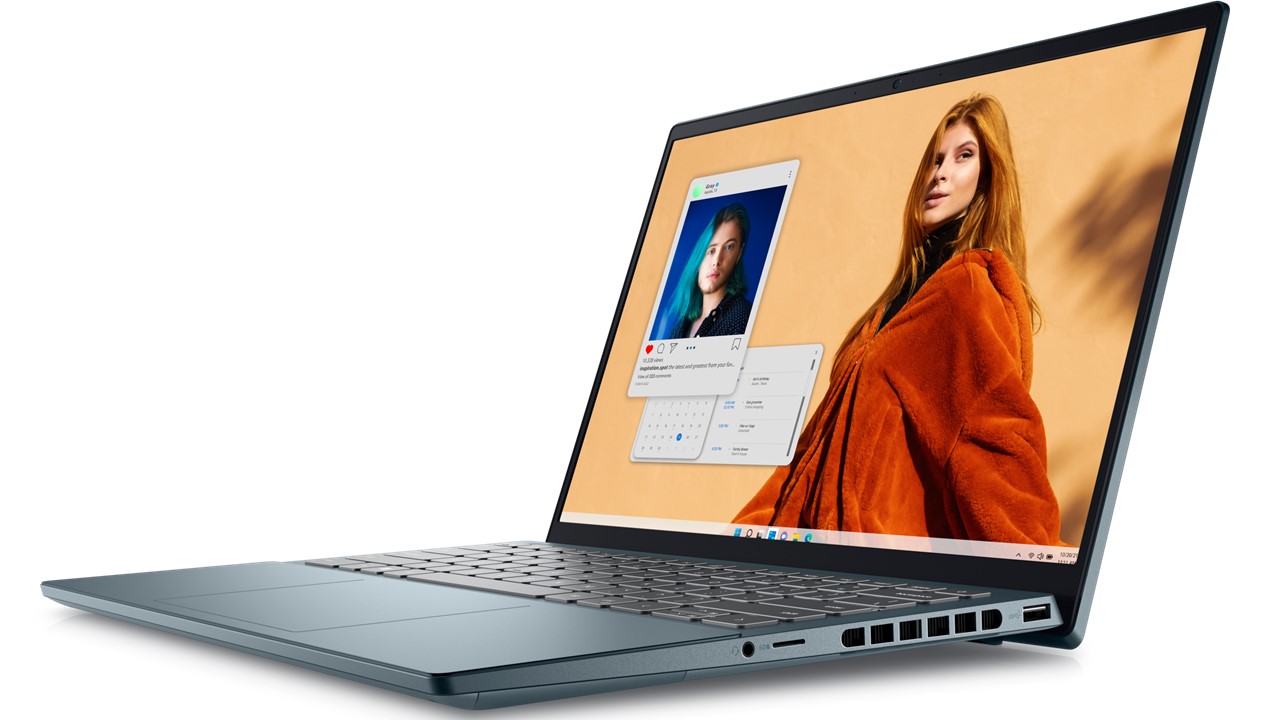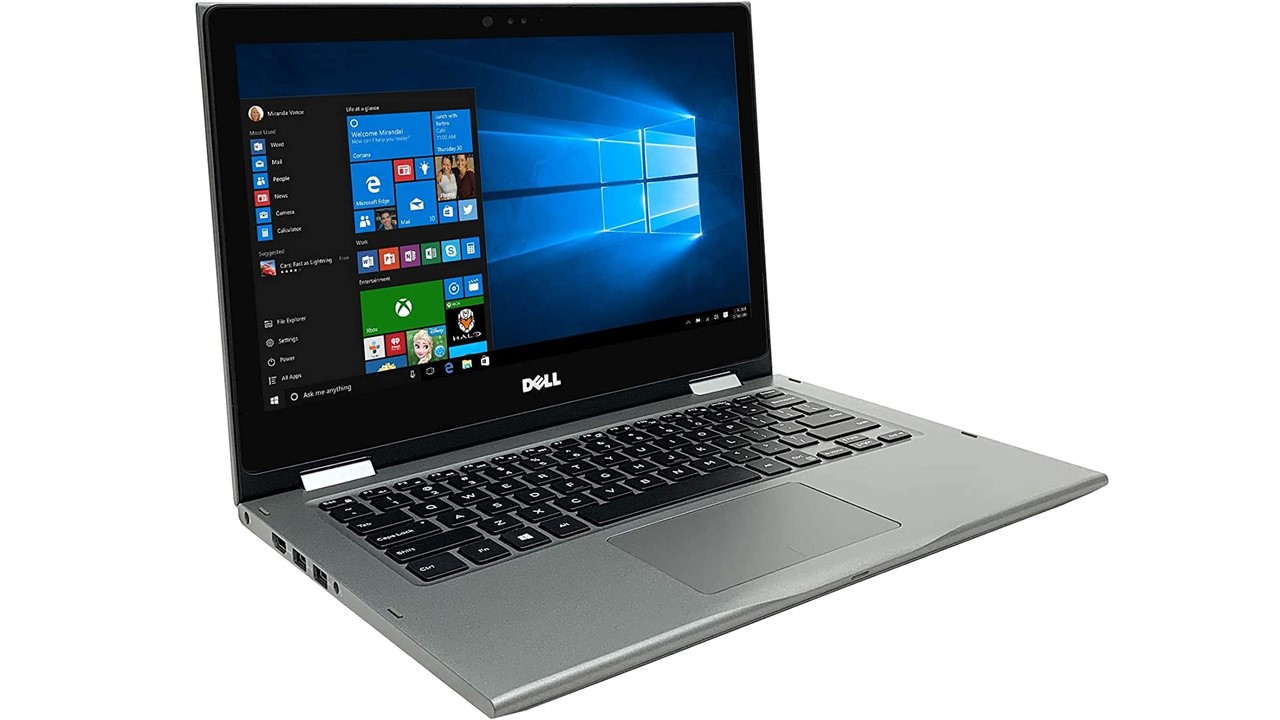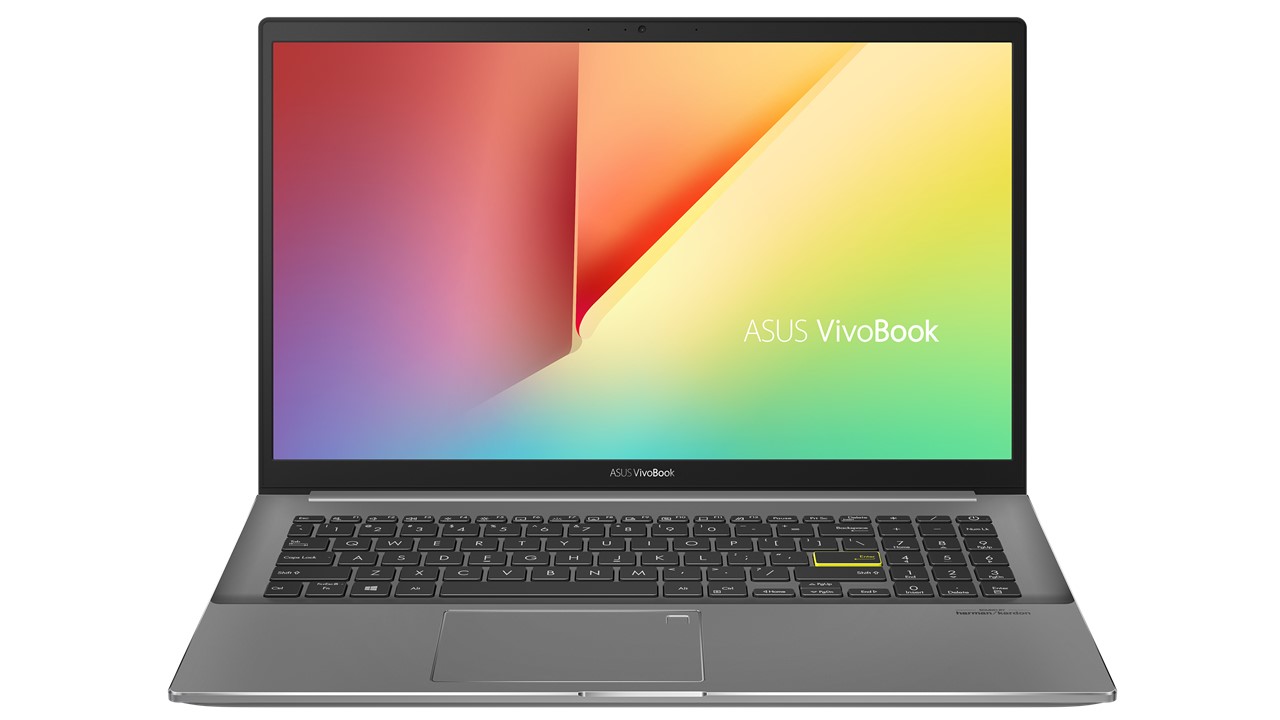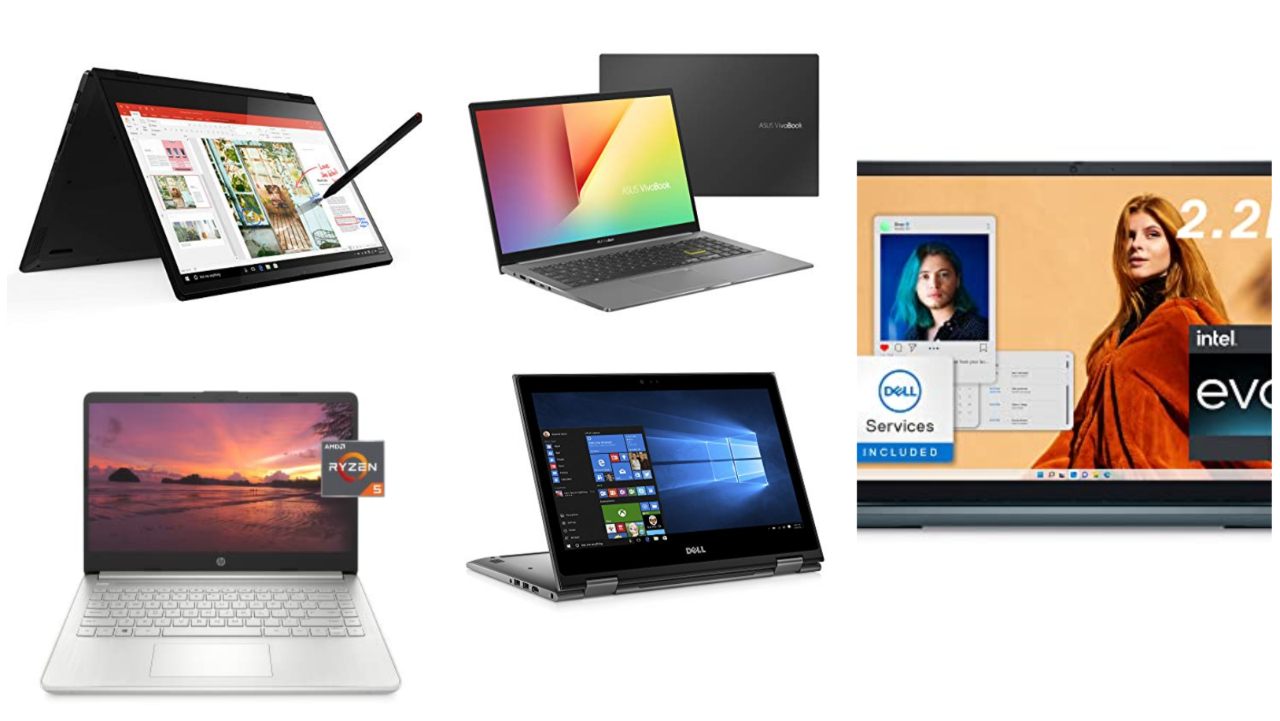A laptop is a crucial investment when it comes to supply chain management, both for a student or as a professional. The good news is that you do not have to spend a large amount of money to buy a laptop.
TOP PICKS:
In This Article
Minimum & Recommended System Requirements for Supply Chain Management
For supply chain management you need to keep some minimal system configurations in your laptop such as an Intel i3 processor, or equivalent AMD processor, 4 GB RAM, and an SSD of 128GB will be more than sufficient.
But to get better performance it is good to have a laptop with better configurations; it will also prevent any technical issues while operating.
Minimum System Requirements: AMD Ryzen 5 3500U | 8GB RAM | 256GB NVMe SSD | Intel HD Graphics 620 | 13.3 inches screen | 1920 x 1080 pixels resolution.
Recommended System Requirements: 12th Gen Intel Core i7-12700H or better processor | 16GB DDR5 RAM or more | 1TB M.2 CL35 M.2 SSD and 1TB SATA HDD or more storage | Intel Iris Xe Graphics or better GPU | 15.6 inches screen or bigger screen | 2240 x 1400 pixels resolution or higher resolution.
5 Best Laptops for Supply Chain Management:
1. Dell Inspiron Plus 7420 Laptop – Overall Best

Bottom Line: This Dell laptop is a great option for supply chain management mainly for its efficient and fast processing. It can serve both as a good productivity device and you can also use it for casual entertainment purposes.
Key Features:
- Screen: 14 inches
- Storage: 1TB M.2 CL35 M.2 SSD
- RAM: 16GB DDR5 RAM
- Processor: 12th Gen Intel Core i7-12700H
- OS: Windows 11 Pro
- GPU: Intel Iris Xe Graphics
Pros
- For powerful configurations, it can generate smooth performance
- Lightweight and portable design
- Wi-Fi 6 connectivity for fast and reliable wireless networking
Cons
- Poor battery life
- A limited number of ports
- Overheated in the long run
The Dell Inspiron 14 Plus 7420 laptop is an excellent option for supply chain management professionals due to its powerful hardware specifications and flexible design.
With an Intel Core i7 processor and 16GB of RAM, this laptop can handle large data sets and multiple applications smoothly which makes it ideal for tasks like inventory management, logistics tracking, and forecasting.
The 14-inch FHD display is perfect for viewing detailed graphs and reports, while the integrated Intel Iris Xe graphics can help in clearly visualizing complex supply chain data.
Additionally, the laptop’s lightweight design and long battery life make it a great choice for professionals who need to work on the go.
2. Dell Inspiron 5379 – Runner Up

Bottom Line: This system is termed as the runner up of this list simply due to the integrated graphics chip, which, by itself, is good enough to handle all computing needs for supply chain management. The larger HDD storage along with the DDR4 RAM will ensure a stable performance in spite of its low rpm.
Key Features
- Screen: 13.3 inches
- Storage: 1 TB SATA HDD
- RAM: 8 GB DDR4 SDRAM
- Processor: 8th generation Intel Core i7 8550U
- OS: Windows 10
- GPU: Integrated Intel UHD Graphics 620
Pros
- The storage capacity of the system is huge.
- The fans run quietly even when the system reaches a high temperature of 800C.
- The display is quite good with wider viewing angles.
Cons
- The cooling system needs some improvement as the laptop becomes hot easily.
- The graphics card is not dedicated.
- There is no optical disc in the system.
The 8th generation Intel Core i7 processor provides a lot of power to the system with its 8 MB cache and a high operating speed of up to 4.0 GHz.
The DDR4 memory of the system operates at 2400 MHz and can be upgraded up to 16 GB.
The huge SATA HDD storage runs at 5400 rpm which adds speed to the performance in supply chain management.
The full HD display comes with IPS panel, less bezel, True Life technology and is LED-backlit which saves a lot of energy. The touchscreen feature adds to the functionality of the screen.
Other features of the laptop such as the wide-angle IR camera, the Windows 10 operating system, and a versatile and strong 360-degree hinge adds to the performance of the system and allows you to be more productive and perform all your computing needs by putting your best ideas forward.
Dell Inspiron 5379 comes in a sleek design and is pretty light in weight to carry anywhere you want.
You can use this system for supply chain management in four modes according to your need and preference.
You can use it as a laptop to type comfortably on the responsive keyboard, in the tent mode in a small workspace, in the stand mode to stream movies, and in a tablet mode as well.
3. ASUS VivoBook S15 Laptop – Ultra Slim Design and Mid Range Killer

Bottom Line: Fast performance, stylish design, and updated features make this device a good option for supply chain management. It is suitable for students, professionals, and anyone who is looking for a reliable, efficient, ultra-slim, mid-range laptop.
Key Features:
- Screen: 15.6 inches
- Storage: 512GB PCIe SSD
- RAM: 8GB DDR4 SDRAM
- Processor: 11th generation Intel Core i5-1135G7
- OS: Windows 10
- GPU: Intel Iris Xe Graphics
Pros
- Clear and vivid display
- Powerful performance
- Fast charging
Cons
- No dedicated GPU
- Limited upgradability
- Windows 11 is missing
The ASUS VivoBook S15 is a great option for supply chain management professionals due to its powerful performance, reliability, and versatility.
Its 11th Gen Intel Core i5 processor and 8GB of RAM ensure smooth multitasking and fast processing speeds, making it ideal for managing multiple applications and large amounts of data.
The laptop’s 512GB SSD provides ample storage space for important documents and files, while the 15.6-inch full HD display offers clear and vivid visuals for efficient and accurate data analysis.
With its comprehensive connectivity options and stylish design, the ASUS VivoBook is the perfect choice for professionals in the supply chain management field.
4. HP 14 Laptop – Stylish and Convenient Features

Bottom Line: This is a lightweight and compact laptop, capable of delivering fast performance. For its full HD display, stylish appearance, and convenient features it is a very suitable PC, for a person, related to the supply chain management field.
Key Features:
- Screen: 14 inches
- Storage: 256GB SSD
- RAM: 8GB
- Processor: AMD Ryzen 5 5500U
- OS: Windows 11 Home
- GPU: AMD Radeon Graphics
Pros
- Smooth and powerful performance
- Light and easily portable
- Updated OS
Cons
- Very short storage capacity
- No touch-screen facility
- Average audio quality
HP 14 laptop is a good option for supply chain management due to its balanced specifications and long battery life.
It is equipped with a Ryzen 5 processor and 8GB of RAM, which allows for efficient multitasking and smooth performance.
The 14-inch micro-edge anti-glare display provides clear visuals, even in bright environments.
The laptop has a long battery life of up to 14 hours, which ensures that you won’t run out of power during a busy workday.
The lightweight design and portability of this laptop make it an excellent choice for supply chain professionals who need a reliable device for managing complex logistics and coordinating with suppliers, carriers, and warehouses.
5. Lenovo Flex 14 – Value for Money

Bottom Line: In spite of having a combination of AMD Ryzen 5 processor and a Radeon Vega 8 graphics, this laptop will offer quite a high value for money when used for supply chain management. The touchscreen feature, the pretty long battery life and the security features in it will enhance the user experience.
Key Features
- Screen: 14 inches
- Storage: 256 GB NVMe SSD
- RAM: 8 GB DDR4 SDRAM
- Processor: AMD Ryzen 5 3500U
- OS: Windows 10
- GPU: Integrated AMD Radeon Vega 8
Pros
- The battery life of the laptop is pretty long.
- The display comes with a touchscreen feature.
- The trackpad and keyboard are responsive and good.
Cons
- There is no numeric keypad in the system.
- The graphics card is integrated.
- The exhaust is under the hinges at the back making it thermally less efficient in tablet mode.
You will get consistently high performance from Lenovo Flex 14 for supply chain management due to the AMD Ryzen processor and its hardware components.
The battery lasts for about 8 hours to provide power all day and this lithium polymer battery comes with a fast recharge technology.
The Windows 10 operating system will provide comprehensive protection against malware, ransomware, and viruses.
The fingerprint reader adds to the security and also allows faster login.
The webcam comes with a practical True Block privacy shutter that enables you to close it physically to protect your privacy when you are not using it.
The full HD screen is good and the touch feature allows using the active pen included in the package to draw, sketch, and take notes directly on it.
The lightweight nature enables you to carry the system wherever you go for supply chain management.
The good number of ports that includes HDMI, USB-C, and USB 3.1 ports allow connecting enough external devices as and when required.
How to Choose Best Laptops for Supply Chain Management?

When you choose your laptop for supply chain management, everything will mainly depend on your needs but just make sure that you do not sacrifice power for portability.
There are a few questions to find answers to, as well as a few considerations to make for choosing the right device.
The most important question to ask yourself before you start your search is what the laptop will be used for mainly.
Once you have determined the primary use of the laptop, you should consider the other factors such as the processing power, the speed of the system to access files, security features, use of the webcam while working remotely and more.
Portability
You can start with determining the portability of the laptop. This is one of the main features of a laptop that depends on the weight and screen size. Consider both based on your computing needs.
As for the weight, if the laptop weighs 3 pounds or less, it will be extremely portable and good to carry anywhere and perform for day-to-day tasks.
If it is up to 5 pounds, it will be portable enough to carry anywhere as well as have more power to perform some complex computing tasks.
A laptop weighing more than that, however, will be less portable but more powerful.
As for the screen size, anything between 13 to 14 inches will be good enough to carry and perform some basic tasks on it for supply chain management. If it is up to 15 inches, it will be slightly larger but good enough to carry.
A screen size more than 15 and up to 16 inches is good to use at home or office primarily for everyday use.
Anything beyond that is good for multitasking, for creative work, and for gaming.
Screen features
Focusing on the features of the screen is also very important because that will make or break the visual quality.
First, the resolution of it, which comes in standard HD screen resolution of 1366 x 768 pixels to full HD or 1920 x 1080 pixels and up to 4K Ultra HD or 3840 x 2160 resolution. A higher resolution means a better-quality picture.
The standard HD resolution is good for basic computing tasks such as using the internet or writing emails.
A resolution of 1600 x 900 pixels is good for playing standard games and watching movies and 1920 x 1080 pixels is good for playing video games and watching movies on Blu-ray discs.
Whereas, 2256 x 1504 pixels is meant for high-definition games and movie watching. It is also good for photography, video editing jobs, and professional graphic design.
Screen resolutions of 2560 x 1600 pixels and more will support all types of complex computing jobs with sharper, crispier, clearer pictures with more details.
You can choose from different display options as well. You may choose an LED screen if you want to save on the battery life and for more screen time and brighter imagery.
An OLED screen is also a good choice to have more beautiful and vivid images with vibrant colors and better contrast. The panel is thinner and also uses much less power.
An IPS panel LCD screen display is a common feature found in most of the laptops today which produces brightly colored images and provides a wider viewing angle.
You may also opt for the touchscreen feature to have a more interactive, better, intuitive, and hands-on experience during supply chain management.
You will have better control on your screen using your fingers to tap, pinch, swipe, expand, move, open, and delete files, images, programs, and documents.
Operating Systems
Since the operating system is the backbone of the laptop, it should be good enough to be able to manage all of the software, hardware, and any other resources and programs that your laptop comes with or is added to.
The two most popular operating systems to choose from for your laptop are Microsoft Windows and Google Chrome for supply chain management. The Mac operating system is typically found in Mac systems.
Windows operating system is most user friendly. You can use it for most of your laptop activities even if it requires a stronger and more expansive bandwidth.
Google Chrome operating system, on the other hand, is good but all files, programs, and documents on your laptop will be saved in the cloud instead of the internal storage of the laptop itself.
This operating system is good for basic computing tasks such as web browsing, checking emails, social media, word processing, and spreadsheets.
Processors
This is the brain of the laptop and determines how exactly and at what speed the information will be processed.
Your selection should meet your supply chain management needs. Higher performance needs will need high-end processors.
The two main types of processor brands are Intel and AMD. There are different types of processors meant for different tasks.
For example, the Intel Core i9 processors are meant for responsive gameplay, Core i7 for multitasking, high-end gaming, and content creation, and Core i5 and i3 processors are for doing everyday tasks.
As for the AMD processors, the Ryzen 7 is found in ultrathin laptops that ensures high performance, Ryzen 5 is for high productivity and entertainment and Ryzen 3 is for performing basic tasks.
AMD Athlon processors produce high-quality visuals and are usually found in the mainstream laptops.
As for the AMD A-series processors, A12 supports online gaming and HD video streaming, A10 is meant for gaming and entertainment and A9 is for basic computing activities.
Memory
The memory of the system, also referred to as RAM or Random-Access Memory, is used by the processor to run software and data.
If you do a lot of multitasking for supply chain management, you will need a higher amount of RAM in your system. It will also affect the speed of the laptop.
Measured in gigabytes or GB, the most common amount of RAM for a laptop to perform basic tasks is 8 GB. For higher performance needs, the laptop should have at least 24 or 32 GB of RAM.
When you choose a RAM, focus on bus clock between 100 and 166 MHz, prefetch of 1n, data rate between 100 and 166 MT/s, transfer rate between 0.8 and 1.3 GB/s, and voltage of 3.3 for standard RAMs.
For DDR3 variants it should be respectively 533 and 800 MHz, 8n, 1066 and 1600 MT/s, 8.5 and 14.9 GB/s, and 1.35 or 1.5 volts for the aforementioned parameters.
For DDR4 RAMs it should be 1066 and 1600 MHz, 8n, 2133 and 3200 MT/s, 17 and 21.3 GB/s, and 1.2 volts, respectively.
Internal storage
First, you should choose between the two main types of storage namely HDDs or hard disk drives and SSDs or solid-state drives.
Hard Drive Disks are the most traditional storage type and these are inexpensive.
You will also get more storage space for your heavy downloading, graphics arts, multimedia usage, and other tasks.
However, these drives heat up quickly and are prone to failures due to the spinning disc inside it.
SSDs typically use flash memory chips instead of any mechanical parts to store data. These are lighter, much faster, and use much less energy.
You may also choose to buy a hybrid storage that combines the two types. The HDD will provide adequate storage capacity but the performance will be of an SSD.
As for the size of internal storage in your laptop for supply chain management, it is good enough to have 256 GB of storage, though higher than that will be better.
Alternatively, you can choose a laptop with smaller storage capacity for supply chain management but make sure it allows server-based storage, known as the cloud.
It will allow remote access from anywhere and from any device.
Graphics Processing Unit
As for the graphics card, you can choose an integrated or a dedicated graphics card in your laptop for supply chain management.
Typically, all laptops that are available on the market are equipped with integrated graphics.
These graphics cards are good and powerful enough to handle all general graphics related computing jobs that are necessary for you.
However, you will need a dedicated graphics card from Nvidia or AMD for high-performance jobs, extreme gaming, photo and video editing, and graphics design.
Ports and connectivity
Depending on your usage and job type for supply chain management, you will need different types of ports to allow connecting different external devices and peripherals.
However, most of the laptops today come with some of the most common ports, which may vary from one model to another, that include one or many USB ports of different types, Thunderbolt ports, media card reader slot, headphone-in and microphone-out combo slot, and Ethernet.
It may also come with different types of DisplayPort and HDMI ports that support different screen resolution and refresh rate.
The DisplayPort 1.2 supports 4K resolution at a refresh rate of 60 Hz, the 1.3 type supports 8K resolution at 30 Hz or 4K resolution at 120 Hz, and the 1.4 type supports 7680 x 4320 or 8K resolution at 60 Hz or 4K resolution at 120 Hz.
As for the HDMI ports, 1.2 supports 1920 x 1200 pixels resolution at 60 Hz, 1.3 supports 2560 x 1600 pixels at 60 Hz, 1.4 supports 4096 x 2160 pixels or 4K resolution at 30 Hz, and HDMI 2.0 supports 4K resolution at 60 Hz.
Type of laptop
Finally, the type of laptops that you can choose from for supply chain management includes a traditional laptop that is ideal for all to use, a detachable 2-in-1 laptop that separates the screen from the keyboard, a convertible 2-in-1 that only rotates the screen but does not detach it to use it in tablet mode as well, or a cheaper Chromebook, if you are okay with cloud-based storage.
Questions & Answers:
What are the advantages of using a laptop supply chain management?
You will have a newer and better conceptual model to evaluate the impacts and the benefits of supply chain management in different dimensions. This includes cost reduction, operational efficiency, process and asset improvement, increased productivity, inventory control, and delivery times.
Which specific browsers are compatible with supply chain management Globe?
Apart from Microsoft Internet Explorer, all other browsers such as Chrome, Safari, Edge, and Firefox are compatible with supply chain management Globe. Even if Microsoft is the regular browser in your laptop then also you can use these browsers for working with supply chain management Globe.
How can a laptop help in inventory addition and subtraction?
You can simply do it by using ‘Day 0 Calculations and Adjustments’ to start a simulation. All the initial calculations will be done by the simulation engine based on the daily demand, on-hand inventory, products picked up and returned, and all other fixed and variable costs.
Why is it that the edit screen loads slowly or loads only part of a supply chain?
There are several reasons for this to happen. The internet connection you are using may be slow or there is congestion in the bandwidth on your connection or you may have to redraw the supply chain map. It may also happen if you do not assign a specific route to a vehicle to ensure proper simulation.
How can you make supply chain management Globe run faster on your computer?
Supply chain management Globe may run slowly at times because it mainly runs on the servers in the cloud partly and the browser on your laptop. The response time is usually affected by the speed of your internet connection and the power of the laptop. Simply increase the amount of RAM and the speed of your internet connection to make it run faster.



